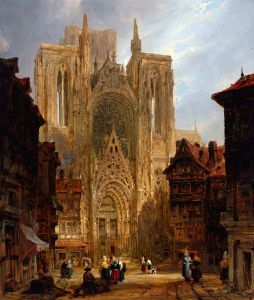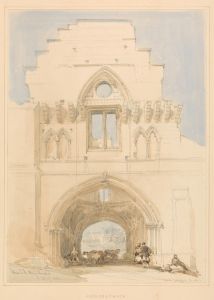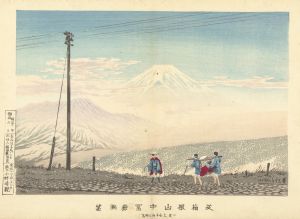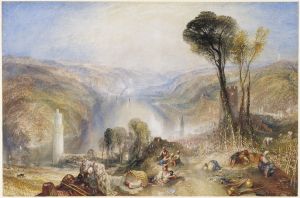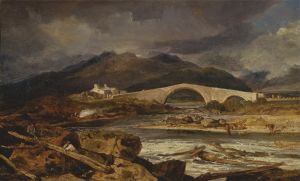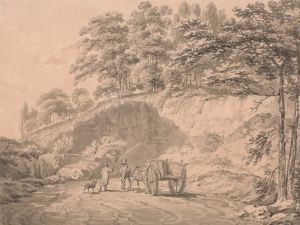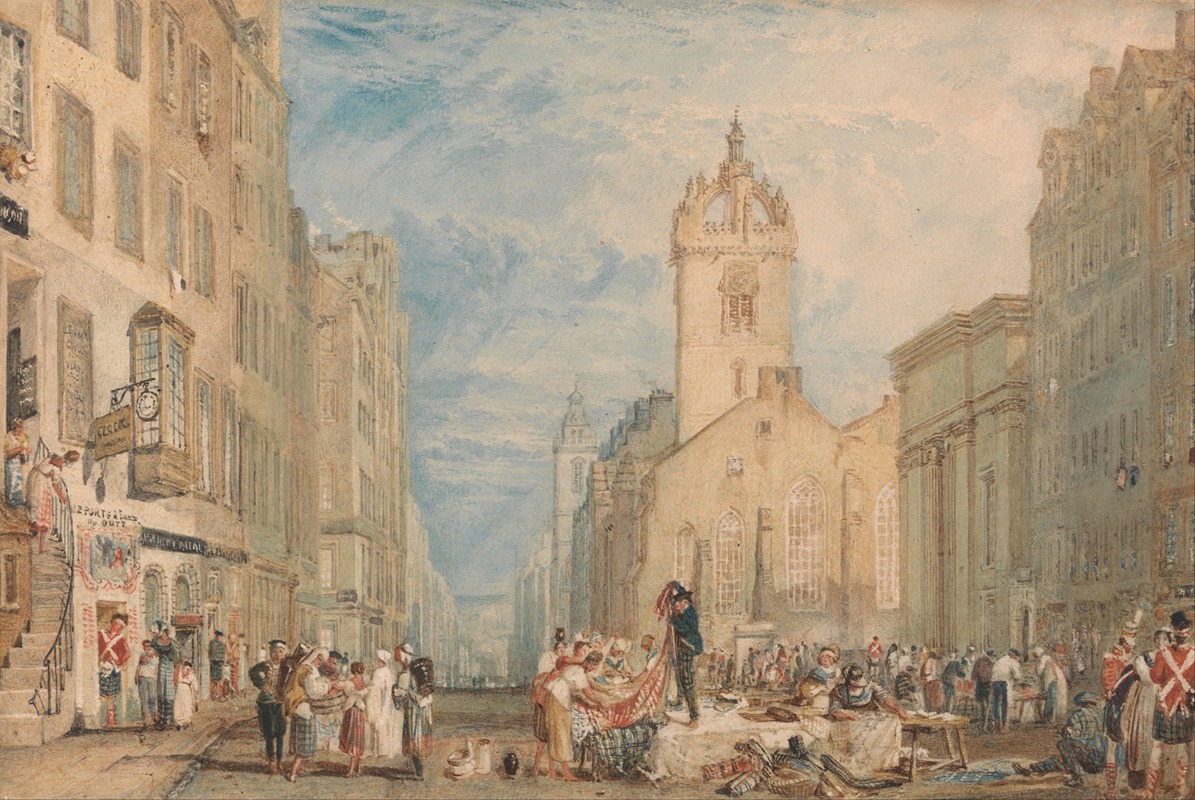
High Street, Edinburgh
A hand-painted replica of Joseph Mallord William Turner’s masterpiece High Street, Edinburgh, meticulously crafted by professional artists to capture the true essence of the original. Each piece is created with museum-quality canvas and rare mineral pigments, carefully painted by experienced artists with delicate brushstrokes and rich, layered colors to perfectly recreate the texture of the original artwork. Unlike machine-printed reproductions, this hand-painted version brings the painting to life, infused with the artist’s emotions and skill in every stroke. Whether for personal collection or home decoration, it instantly elevates the artistic atmosphere of any space.
Joseph Mallord William Turner, one of the most renowned British artists of the 19th century, is celebrated for his innovative and expressive landscapes and seascapes. Among his extensive body of work, "High Street, Edinburgh" stands out as a significant piece that captures the essence of Edinburgh, Scotland's capital city. This painting is part of Turner's broader exploration of urban landscapes and his fascination with the interplay of light and architecture.
"High Street, Edinburgh" is a watercolor painting, a medium Turner mastered and used extensively throughout his career. Turner was known for his ability to capture atmospheric effects and the transient qualities of light, which is evident in this work. The painting depicts the bustling High Street, a central thoroughfare in Edinburgh's Old Town, known for its historic and architectural significance. This street is part of the Royal Mile, which stretches from Edinburgh Castle to the Palace of Holyroodhouse.
Turner's depiction of High Street is characterized by his use of light and color to convey the vibrancy and dynamism of urban life. The painting likely captures the street during a typical day in the early 19th century, with figures and carriages populating the scene, adding a sense of movement and life. Turner's technique involves loose brushwork and a delicate application of watercolor, which allows him to create a sense of depth and atmosphere, making the viewer feel as though they are part of the scene.
The architectural elements in the painting are rendered with a keen eye for detail, showcasing Turner's interest in the built environment. Edinburgh's High Street is lined with historic buildings, many of which date back to the medieval period. Turner's portrayal of these structures highlights their grandeur and historical significance, while also emphasizing the contrast between the solid, enduring architecture and the ephemeral nature of the people and activities that animate the street.
Turner's visit to Edinburgh and his subsequent creation of this painting were part of his broader travels across the United Kingdom and Europe. These journeys were instrumental in shaping his artistic vision and provided him with a wealth of subjects to explore in his work. "High Street, Edinburgh" reflects Turner's ability to capture the spirit of a place, combining topographical accuracy with a poetic interpretation of the scene.
The painting is a testament to Turner's skill as a watercolorist and his ability to convey the essence of a location through his art. It remains an important work within his oeuvre, illustrating his contribution to the development of landscape painting and his influence on subsequent generations of artists. Turner's innovative approach to capturing light and atmosphere continues to be celebrated and studied, securing his legacy as one of the great masters of British art.






